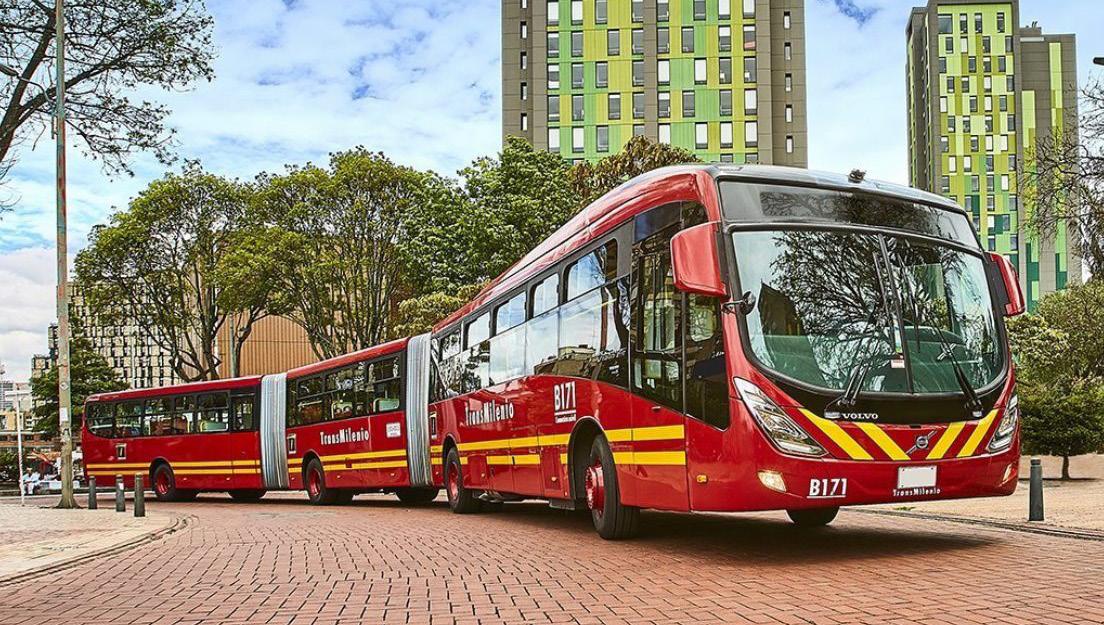
2 minute read
THE TRANSMILENIO
Renewing Bogota’s transport system
journey from end to end down to 55 minutes. After seeing its success, the local and central government invested a further $545 million and had the 2nd phase completed in 2006. And created the lines C, E, F and G with this completion it created another 84 km of routes. Providing transport for 5 million a day with 80% of the city having access to this system.
Advertisement
Phase 3 saw another investment of $1.3 billion and was completed in 2016 with the creation of lines K, L and M, which meant there were 2400 buses in circulation and made the system's entire length 114.4km.
of the mayor to stop strikes and begin talks, and again in 2012 with the increase of ticket price, overcrowding and delays which caused protests and looting causing $0.5 in damages. In 2016 Transmilenio had an 86% disapproval rating over User strikes erupted over bad service quality, with users blocking bus lanes and at times halting the entire system.
Bogota’s Transmilenio bus system, in Columbia provides a huge city with a fast and effective transport system with a large ridership. Bogota is Colombia's largest city with a population of 8.2 million. With a population density of 3900 people per square KM.
In the early 90s Bogota’s bus system was chronically underused and lacked quality of efficiency. It became slow and unregulated and lacked use from the general public intended for its use.
In 1998 with the election of mayor Enrique Penalosa, launched a long-term mobility plan as part of a large-scale urban renewal strategy in Bogota’s favelas and providing access to all city wide.
In 1999 after the central government declined the notion of a subway system mayor Penalosa presented the Bus rapid transit system (BRT), after seeing how successful it was in Curitiba (Brazil)
The system had 4 main goals:
1.Improving this system would increase efficiency, safety, speed and convenience.
2.Restricting automobile use.
3.Expanding and improving bike paths
4.Increasing availability of public space.
It received an initial investment of $240 million dollars and in 2001 phase one of the system was completed with the creation of line A, B, D, H and J which took what was an over 2-hour
At current the BRT system carries more than 1.5 million people a year and the exponential growth of the system through the last 2 decades clearly shows with both its interaction and statistics that it is an efficient and effective mode of transport.
Although the BRT system has been an effective in many ways it did have its limitations as a system, the first being the rush hours and volume of passengers during these times causes stations to be massively overrun causing delays and even not being able to let passengers of the buses at its busiest stations, Secondly protests of bus drivers have been a major disruption which occurred in 2006 with the disagreement over monetary compensation in exchange for old buses and eventually took the intervention
Was it successful?
In many ways, the system was pivotal in providing transport routes to those in informal settlements and those who were situated further from the city center. It dramatically reduced travel time by over 32% and provided a higher frequency of both stations and buses in circulation. It also reduced average traffic congestion and increased travel speed for other vehicles. And reduced city related traffic incidents by 92% and collisions by 75%.
In conclusion the BRT started off as a great way to connect a vast city and its rapidly growing population. It provided a massive network for a large portion of the population to utilize and has connected almost every area within the city's boundaries. Even with the constant expansion and investment and being a widely used and effective system, the sheer size of population and funds available meant that the buses and stations became very overcrowded and slowed service, along with the increase in ticket price has meant that it has lost a lot of riders. Regardless, it is still hugely used by the population. But overall, it has been a very effective form to contribute to Bogota’s infrastructure.










